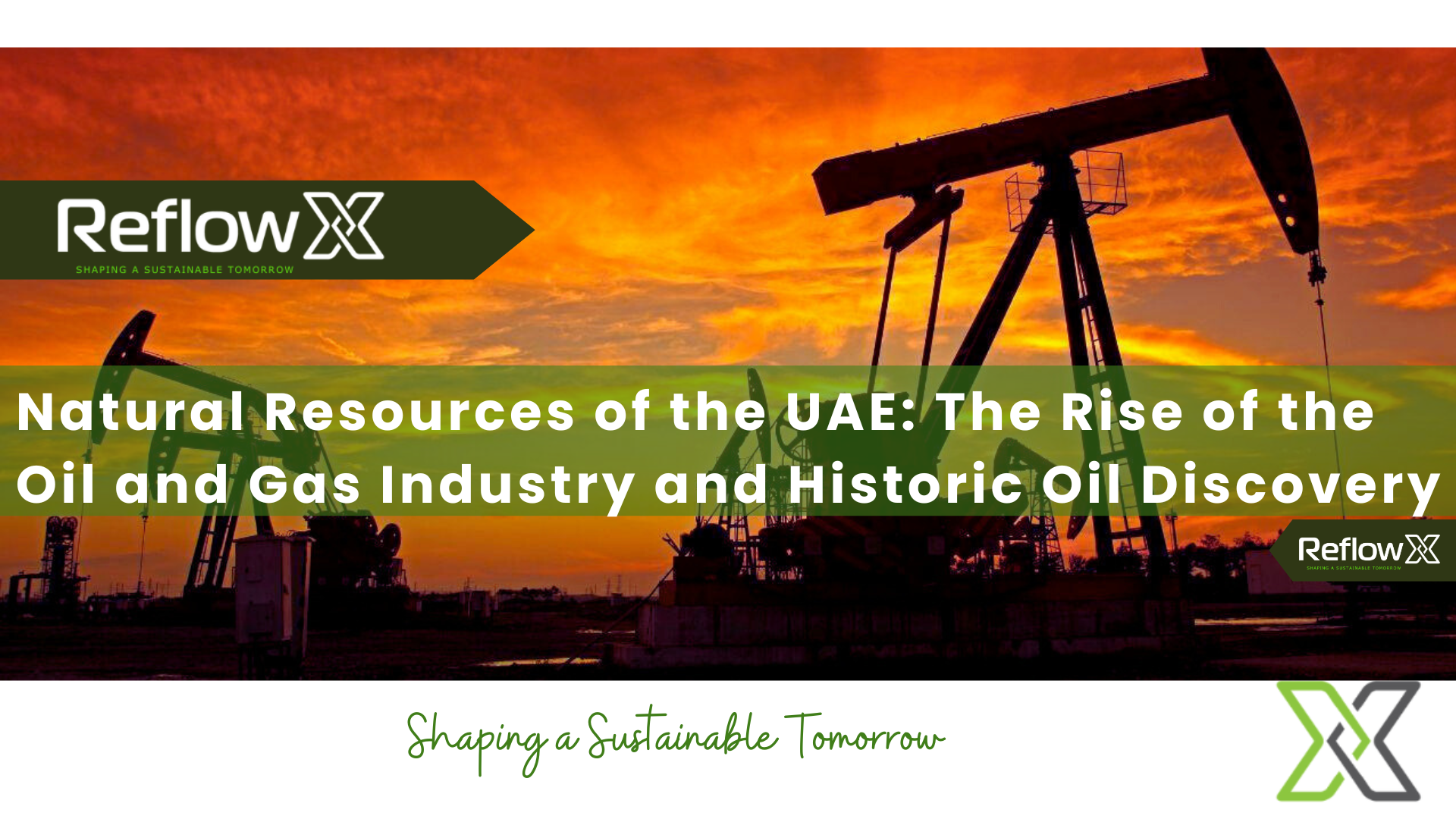
The United Arab Emirates (UAE) is currently recognized by its skyscrapers, high end tourism, and high technology infrastructure. Yet, beneath its modern identity lies the story of how the natural resources of the UAE shaped its destiny. The historic oil discovery in UAE in the mid-20th century transformed the nation’s economy and established the oil and gas industry in UAE as one of the most influential in the world.
Life in the UAE Before Oil
Before oil, the UAE had a simple economy. People relied on fishing, pearl diving, and small-scale trade. Harsh desert conditions limited farming to date palms and animals.
The pearling business was once vital, but it collapsed in the 1930s. This happened due to the rise of cultured pearls and unstable global economies. The region then needed a new source of stability, which came with the oil discovery.
The First Oil and Gas Discovery in the UAE
The turning point was in 1958, when the Bab oil field located in Abu Dhabi had found commercial oil. This was the first major oil discovery in the UAE, and it set the stage for profound change. In 1962, Abu Dhabi exported its first shipment of crude oil, officially launching the oil and gas industry in Dubai. In 1966 the discovery of the Fateh oil field joined Dubai shortly.
Such findings brought in a new age of wealth, modernization, and ambition. Villages became towns, and investments in infrastructure changed everyday life. Roads, schools, hospitals, and housing projects started to expand around the emirates, the root of a modern UAE today.
Growth of the Oil and Gas Industry in the UAE
The 1960s and 1970s were the years of boom. The fact that Abu Dhabi had huge oil deposits resulted in the emirate becoming the richest. The visionary leader of Abu Dhabi, Sheikh Zayed bin Sultan Al Nahyan, would take the oil earnings to modernize the region and drive towards unification. The establishment of the United Arab Emirates in the year 1971 was directly aided by oil wealth.
The establishment of the Abu Dhabi National Oil Company (ADNOC) in 1971 gave the UAE greater control over its oil and gas industry in Dubai. Foreign firms were not so much involved, but national ownership continued to mean that the resources were directed to the benefit of the nation. By the 1980s, the oil and gas industry in the UAE had positioned the country as one of the world’s leading oil exporters, funding social development, infrastructure, and modernization. the UAE
Importance of Natural Gas in the UAE
Even as oil was fast becoming a source of instant wealth, natural gas turned out to be equally important over time. Early on, the gas that was produced with oil was flared, but the UAE subsequently invested in capturing and using the gas.
Power generation, desalination, and petrochemicals now require the use of natural gas. Projects like the Dolphin Gas Project strengthened regional cooperation and made natural gas a vital component of the natural resources of the United Arab Emirates.
Economic and Social Impact of Oil and Gas Discovery in the UAE
The oil discovery in the UAE changed every aspect of life. Revenue from the oil and gas industry in Dubai financed education, healthcare, housing, and infrastructure at an unprecedented scale. Modern apartments replaced mud-brick houses, and roads and airports linked communities that were previously isolated.
The UAE was another multicultural center, as the oil boom also invited workers and professionals from all over the world. Expatriates constitute the largest percentage of the population today, and this has helped the country grow in other sectors other than oil.
Environmental Considerations
The growth of the oil and gas industry also raised environmental challenges. The mining and consumption of fossil fuels are contributors to climate change and emissions. The UAE has reacted by putting substantial investments into renewable energy projects like Masdar City in Abu Dhabi and solar projects in Dubai.
The government has also vowed to ensure that it has reached net-zero emissions by the year 2050, indicating that it is serious about balancing development and sustainability.
Legacy of the Oil Discovery in the UAE
The story of oil discovery in the UAE is not just about wealth, it is about transformation. Without oil, the UAE might not have become so integrated and international in its economy. Oil revenues fueled the change, and the nation’s leaders ensured they invested that wealth back into long-term development.
Today, the natural resources of the United Arab Emirates continue to support growth. However, the nation’s future depends on diversification, sustainability, and innovation. The oil and gas industry in the UAE remains central, but forward-looking sectors now strengthen resilience in a changing world.
Conclusion
Ever since its oil discovery, the UAE has gone far, evolving into a major energy hub in the world since it is a small trading hub. The future, however, demands a trade-off between using Dubai’s natural resources and turning green.
As the oil and gas industry in the UAE evolves, so must its approach to climate and environmental responsibility. Reflowx focuses on re-engineering the envelope to progressive and sustainable solutions, and these are part of the vision of sustainability in the UAE.
We are striving to adopt a smarter, cleaner, and more resilient energy future in this resource-rich economy, either by digital transformation or green innovation.
 Prev Blog
Prev Blog